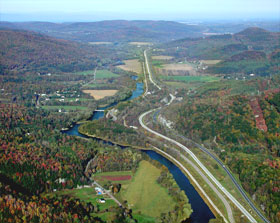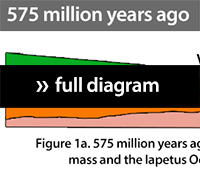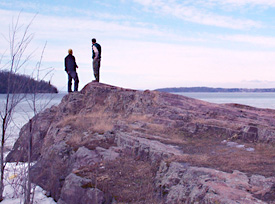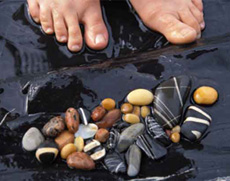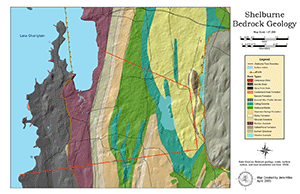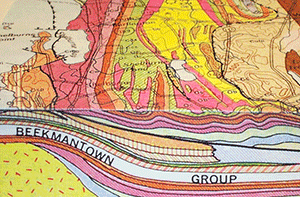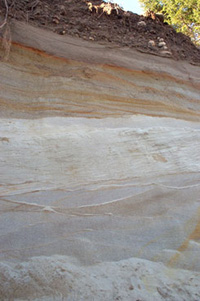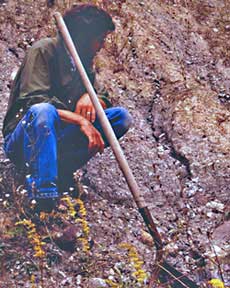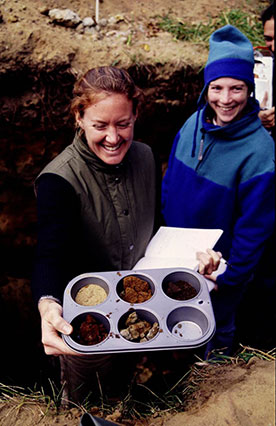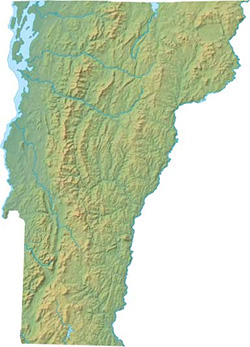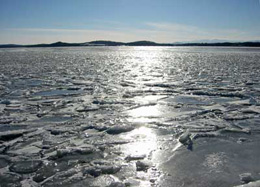A Brief History and Overview of Vermont’s Physical Landscape
The story of Vermont begins thousands of millions of years ago. However, we can gain some understanding of Vermont’s most striking physical landscape features by focusing on just three major events:
- the formation of the Iapetus Ocean 575 million years ago
- the Taconic Orogeny that began approximately 450 million years ago
- the most recent cycle of glaciations that ended 13,000 years agos
The Formation of the Iapetus Ocean
The Iapetus Ocean formed as a rift began to widen in the Grenville Supercontinent about 575 million years ago. This ocean was in the same relative position to the newly forming proto-North American continent, as the Atlantic Ocean is to North America today, except that the entire formation was shifted thousands of miles to the south. For about 100 million years the Iapetus Ocean existed as a wide shallow tropical sea and sediments eroded from the proto-North American continent and settled onto the sea floor. Over time these sediments compressed and lithified, forming large slabs of limestone, sandstone and shale.
The Taconic Orogeny
About 500 million years ago, the continents on either side of the Iapetus Ocean began drifting back together. The result was a subduction zone along the edge of the proto-North American continent. Volcanoes lined the subduction zone and formed the Taconic Island Arc at the continent’s edge. As the continents continued to move toward each other the chain of volcanic islands collided and fused with the eastern edge of proto-North America. The collision of the Taconic Island Arc with proto-North America is called the Taconic Orogeny. This was an extensive mountain building period. Rocks such as the limestone and shale that formed at the bottom of the Iapetus Ocean, were subjected to high heat and pressure and metamorphosed to varying degrees. Today we can find these rocks (schist, marble, sandstone, quartzite, limestone and shale) throughout the Taconic and Green Mountains of Vermont. It is interesting to note that Vermont’s mountains today are merely the remnants of the much larger mountain chain formed by the Taconic Orogeny.
You might wonder about the granite that is found in the Northeastern part of the state. The granite is an igneous rock that was created toward the end of the closing of the Iapetus Ocean as yet another subduction zone formed where the two continents were colliding. Unlike the Taconic Island Arc, the magma that rose up from during this event never reached the surface of the earth. Instead, the magma cooled underground and created the large plutons of granite. Over time these plutons were pushed to form the White Mountains and Vermont’s Northeastern Highlands.
Glaciation
Mountain building in Vermont subsided approximately 200 million years ago. Consequently, erosion is the main process that continues to shape the physical landscape of Vermont. One consequence of the massive erosive power of a glacier is that it wipes out much of the evidence from the previous glacial event. So we will focus on the most recent period of glaciation that began about 90,000 years ago. This was the beginning of the Wisconsin Glaciation. As global temperatures drop, snow accumulates faster than it can melt and forms thick ice sheets. For 70,000 years or so these ice sheets flowed south, redistributing enormous quantities of soil and debris as they went. The largest ice sheet that formed during this period was the Laurentide ice sheet; it covered much of Eastern North America, and was over a mile thick in places.
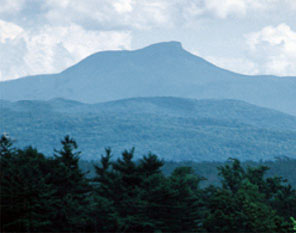
Camels Hump, a classic “roche moutonée”
Vermont was completely buried by the Laurentide ice sheet. The erosive power of this glacier made the surface of Vermont’s landscape what it is today. Because of all the debris that glaciers carry, one can think of an ice sheet as a mile-thick piece of sand paper. A glacier will creep through a narrow gorge and leave it a wide scraped out valley. As glaciers push up and over steep mountains they smooth out front side, and pluck away debris from the leeside. This process is what formed Vermont’s characteristic “roche moutonée” topography. Camel’s Hump is a classic and well-known example, with a sloping north face and very steep south face.
Many major landscape changes occurred as the glacier retreated as well. Glaciers leave behind huge quantities of debris and sometimes, more importantly, water. About 20,000 years ago global temperatures began to rise and the Laurentide ice sheet started its retreat and by 13,000 years ago the ice sheet had retreated north to southern Quebec. During this slow retreat, several temporary rivers and lakes formed in Vermont’s lowlands. Not only was there lots of melt water inundating the state’s valleys, but the weight of the ice had depressed the continental crust so much, that what is now Lake Champlain was temporarily a small inland sea connected to the Atlantic Ocean via the St. Lawrence River. We can still see evidence of these glacial rivers, lakes and sea in the enormous amounts of erosion, sediments, and fossils they left behind.
Recommended Reading: The Story of Vermont: A Natural and Cultural History C. M. Klyza and S. Trombulak, University Press of New England 1999.
For an excellent overview of Vermont’s physical landscape, also visit: The Landscape Change Project
